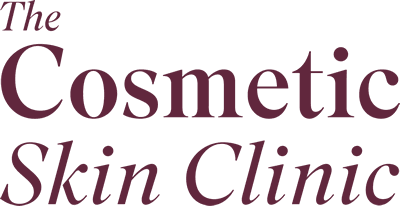Hammertoe Treatment
“Relieve the pain and pressure of hammertoe with our leading hammertoe corrector treatment. ”
By Dr. TRACY MOUNTFORD on Hammertoe
Hammertoe is a foot deformity that can cause your toes to curl and bend downwards. The hammertoe condition can happen on any foot, although it most commonly occurs on the second or third toes.
As well as looking unsightly, it can cause significant discomfort when walking or exercising and can lead to the formation of corns, calluses and open sores on the feet. If left untreated, it can also lead to permanent foot deformities. While there is a wealth of products available to minimise the symptoms, including hammertoe cushions and pain relievers, the only way to get rid of hammertoe permanently is through a surgical correction procedure.
Consultations and treatments are available at our clinic in London.
*Reviewed by Dr Tracy Mountford Medical Director, MBBS MBCAM

At The Cosmetic Skin Clinic, we are proud to offer a unique minimally invasive hammertoe treatment that leads the way when it comes to patient success rates and recovery. We work in collaboration with The Private Clinic, an award-winning UK leader in foot surgery treatments. Unlike other UK clinics, our procedure involves minimal downtime and fast recovery thanks to the ground-breaking work of renowned Orthopaedic Consultant Surgeon Dr Andrea Bianchi, MD GMC Number: 7093105, who pioneered this cutting-edge treatment from years of independent research. His simple ‘walk-in, walk-out’ treatment uses keyhole surgery techniques that are performed quickly and effectively under local anaesthetic. This means minimal downtime, minimal post-operation pain and rapid patient recovery. Consultations and treatments for this exclusive procedure are available at our London clinic.
Get rid of hammertoe and its symptoms with our ground-breaking treatment.
When a hammertoe forms, patients should first seek to reduce or minimise the symptomatic pain. Wear bigger shoes or use hammertoe pads and cushions to prevent unnecessary pressure and friction on the affected toes. Hammertoe exercises to stretch and strengthen the affected toe, such as scrunching up a towel with your toes, can also help to alleviate pain, along with over-the-counter medicines like ibuprofen. These products will provide immediate short-term relief. The only way to fix the toe deformity completely is using a surgical hammertoe treatment to re-align the bone joints. This will help the affected toes to lay flat rather than bending or curving downwards like a hammer or claw.
What is Hammertoe Surgery?
Hammertoe surgery is a type of toe deformity treatment. It seeks to realign the muscles, tendons and ligaments that are causing the affected hammertoes to curl over and bend. A hammertoe occurs when the tendons and muscles tighten up or become unbalanced due to excess pressure on the toes. This pressure can be caused by surrounding bunions pressing against the middle toes, or tightly fitting footwear that squeezes the tendons. The toe bends out of shape as a result.
This bending of the toes can lead to a permanent toe deformity if left unchecked. Hammertoe surgery corrects the misaligned toes by working on the ligaments, muscles, joints and tendons to reposition them back to normal. Unfortunately, this corrective surgery has been associated with a range of complications and side effects in the past. We are one of the only clinics in the UK that now offers a pioneering breakthrough treatment that avoids these negative factors.

Hammertoe Deformity Treatment
We have revolutionised the way that hammertoes are treated with our minimally invasive hammertoe surgery. Using a quick keyhole surgical technique that can take less than 15 minutes to complete, it applies geometric fractures in the foot to reposition the toe. Patients can leave straight after having the treatment and can get back to their normal activities without the use of crutches or surgical support.
Benefits of Hammertoe Surgery
As a cutting-edge treatment, we have researched and created a technique that avoids the pitfalls of other surgical treatments like lengthy downtime and painful side effects. Our exclusive hammertoe treatment has a range of stand-out benefits:
– Walk-in-walk out, minimally invasive day-case treatment
– Local rather than general anaesthetic
– Uses minimally invasive keyhole techniques
– No metal fixtures, wires, screws or plates required
– Minimal postoperative pain and aftercare
– 2-3mm skin incisions which leave no scar
– Quick and easy treatment
– Minimal side effects
– Minimal downtime and no crutches needed – you can return to everyday activities within 1-2 days
– State-of-the-art medical facilities and expert aftercare support
Hammertoe Surgery Results
The results following minimally invasive hammertoe surgery are instant. The fact that no screws, plates, or metal fixtures are required in recovery means that your recovery will be quick with no need for crutches. You will be required to wear supportive bandages and a specialised orthopaedic shoe for around 20 days after surgery. But you will be able to walk and stand immediately following the operation. The shoe and dressing should then be removed at your follow-up appointment. Many patients are free to wear comfortable shoes like trainers from this time onwards. We will then take an X-Ray image of your foot at 1-2 months post-surgery where you can see your progress and compare it to your pre-treatment condition. By this time, your toes will lay flat as they should, and you will be able to notice the impressive cosmetic results.
Hammertoe Correction Surgery explained
Different hospitals and clinics carry out hammertoe surgery in different ways. Most of the procedures on offer require patients to spend weeks off work recovering, with significant periods of post-op recovery time and surgical side effects. Many treatments involve the use of intense general anaesthetic which can make you feel drowsy or sick afterwards. Common treatments like joint resection and fusion also involve the use of pins, screws and plates to force the bent toes to stay straight during the course of post-op healing. Additionally, standard NHS hammertoe surgeries involve lengthy waiting lists, meaning that hammertoe sufferers may endure months of pain and discomfort while they wait for their treatment slot.
Thankfully, we have worked collaboratively with leading Orthopaedic Consultant Surgeon Dr Andrea Bianchi to introduce a unique minimally invasive procedure that isn’t available anywhere else. So you can treat your hammertoe condition quickly and effectively, without the hassle of alternative treatments. Dr Andrea has spent over 15 years carrying out foot operations like hammertoe surgery and is a renowned orthopaedic expert, having supervised over 50,000 toe surgeries.
Find out more detailed information on what the hammertoe treatment involves, and the costs in our READ MORE section below. Alternatively, contact our clinics in London and Buckinghamshire to book an appointment!
Read more about Hammertoe Treatment
Our Leading Minimally Invasive Hammertoe Surgery
Dr Andrea Bianchi and his team of experts worked together to come up with a completely new natural operation to treat foot conditions like hammertoe, mallet toe and bunions. Dr Bianchi formally introduced this brand-new procedure in 1996, inspired by percutaneous keyhole surgery. Known as the keyhole hammertoe procedure, it is minimally invasive and can take as little as 15 minutes to complete using a light local anaesthetic. Unlike traditional hammertoe surgical techniques, it does not use any fixative devices such as wires, screws or plates to realign and straighten the toes. This lighter approach allows a patient’s foot to heal naturally and results in improved comfort and functionality following the procedure. No crutches or walking sticks are needed, and patients can return to their lifestyle with minimal downtime almost immediately after treatment.
How does Hammertoe Surgery work?
Dr Bianchi performs this exclusive hammertoe surgery procedure at a state-of-the-art clinic in Fitzroy Square, London. The minimally invasive keyhole procedure uses continuous X-ray imaging known as fluoroscopy to guide the treatment. The surgeon then uses surgical dental burrs to delicately modify the bones of the foot and flatten out the toe deformity via tiny 2-3mm incisions. These very small incisions will leave no visible scars and will also heal rapidly.
Once the bones have been realigned, the fractures are left free to hold the toe position in place flexibly without the use of any fixative devices like screws, wires or pins. This is where the treatment really stands out against other surgical options, as it allows the foot to heal in a more natural position. This results in greater comfort and functionality post-procedure. The foot heals according to the patient’s own load-bearing needs, and not forced to heal in a physically fixed position, which might not be suitable or comfortable for the individual patient.
We then apply a specialised bandage around the treated foot to maximise optimal physiological healing. Patients also fitted with a specially contoured orthopaedic shoe that will further aid the healing process. We will encourage you to walk on the foot just before you leave so you can get back to normal straight away.
Is Hammertoe Surgery worth it?
Choosing to have hammertoe surgery is a completely personal decision to make. If you are experiencing a lot of pain and discomfort when carrying out simple activities like walking or exercise, then this is a great reason to consider it.
Many patients are often reluctant to have surgical correction after hearing stories about lengthy downtime and the pain of fixative devices. But thanks to the innovations of our world-class team, we are now able to offer the UK’s most minimally invasive hammertoe treatment which is not available anywhere else. To get advice on whether the procedure is right for you, fill out our enquiry form and our team of experts can advise.
The Best Hammertoe Surgery Treatment
Our advanced hammertoe removal procedure is one of the leading toe deformity procedures available in modern-day orthopaedics. The procedure’s impressive success rate of 98% means that it is the best hammertoe treatment available in the UK today.
Where can I get minimally invasive Hammertoe Surgery near me?
Consultations for hammertoe removal surgery, bunions and tailor’s bunion treatments are available at The Cosmetic Skin Clinic. We perform the surgery at our state-of-the-art medical facility on Fitzroy Square in the heart of central London. Contact us today to make an appointment and benefit from a breakthrough approach that is exclusive to The Private Clinic, our sister clinic.
How much does Hammertoe Surgery cost?
Hammertoe consultations with our Orthopaedic Consultant Surgeon Dr Andrea Bianchi are £200 which includes a complimentary x-ray of the foot. Prices for minimally invasive keyhole hammertoe surgery depend on each patient and how many toes are affected. As a guide, it costs £4,600 for one hammertoe to be treated by Mr Bianchi.
Contact our clinics in London and Buckinghamshire to book an appointment!
FAQ
Hammertoe is a deformity of the foot that occurs due to an imbalance of muscles, tendons and ligaments that hold the toe straight. A typical hammertoe has an abnormal bend in the middle joint of a toe, where the bones meet. This makes the toe joint sit slightly higher than the rest of the toes, leading to friction and pain. Hammertoe usually occurs on the second, third and fourth toes of a foot.
Usually, hammertoe forms gradually over time but it can be present at birth. Hammertoes are frequently caused by bunions, which tend to push the big toe sideways so that it affects the alignment of the surrounding toes. Hammertoe can also be aggravated by repeatedly wearing ill-fitting or tight shoes and high heels. All of these tend to force the toes to cramp together. This puts increased pressure on a toe’s ligaments, muscles and tendons, which can lead to a toe deformity forming. Patients with arthritis and those with high foot arches are also more likely to experience hammertoe.
A hammertoe is one type of toe deformity, but there are also others, including mallet toes and claw toes. All of these types of toe deformity refer to toes that sit in unusual positions instead of staying flat, like the standard position of a normal toe. Each of these toe deformities tends to affect different parts of the foot or toe, but they can all be treated with our minimally invasive toe correction treatments.
Women are much more likely to develop a hammertoe than men. However, men still do suffer from the condition. The majority of men’s hammertoes are hereditary. However, wearing ill-fitting footwear, having collapsed foot arches and flat feet, or foot injuries, can also aggravate the problem.
One of the most common causes of hammertoe is wearing short, narrow shoes that are too tight. These shoes force toes into cramped conditions, causing them to bend upwards. The muscles and tendons in the squashed toes then tighten and become shorter. This can cause the toe to stay in a bent position, leading directly to a case of hammertoe.
f the most common causes of hammertoe is wearing short, narrow shoes that are too tight. These shoes force toes into cramped conditions, causing them to bend upwards. The muscles and tendons in the squashed toes then tighten and become shorter. This can cause the toe to stay in a bent position, leading directly to a case of hammertoe.
Most patients will be able to visibly see the hammertoe by identifying its bent shape. You may also experience continual pain and discomfort when wearing shoes or carrying out simple activities like walking.
Unfortunately, hammertoe is a progressive condition, meaning that it is unlikely that it will disappear on its own. If left untreated, bent hammertoes can become fixed in their abnormal position, and will require surgery to realign them. Some cases of hammertoe progress more quickly than others – the situation will vary from person to person.
Yes! Patients are able to walk immediately without assistance from a person or device straight after having the treatment.
After having hammertoe surgery, you will need to wear a special type of shoe to protect your toe and keep it in position for around 20 days. After your follow-up appointment, we can assess the healing of your foot to see whether you can wear standard footwear choices. We advise that patients wear more comfortable shoes like trainers at this time to better facilitate the recovery process. Your clinician can advise further on your post-op footwear choices during your consultation.
At The Cosmetic Skin Clinic, we are medically trained to minimise any pain or discomfort during minimally invasive treatments. Our advanced hammertoe surgery is performed under local anaesthetic so you won’t feel any pain while the procedure takes place. Some patients may experience a little pain or discomfort once the local anaesthetic has worn off. But this discomfort usually isn’t long-lasting and can be relieved with over-the-counter painkillers.
Our hammertoe treatment surgery is a minimally invasive procedure with little to no downtime. Patients will be able to walk without the help of crutches almost immediately after the surgery is complete. We advise that you take care to rest the treated foot when possible. But the majority of patients are able to return to work and their everyday activities after just 1-2 days. You will be asked to wear the orthopaedic shoe until you return for your follow-up check-up at 15-20 days post-treatment.
Patients will need to return to the clinic 15-20 days following their hammertoe surgery. At this point, we will assess healing progress and remove the bandaging, or change it depending on your circumstance. In the vast majority of cases, patients are also able to start wearing comfortable shoes again at this time once they have been assessed and advised by the surgeon. We then review results 45 days after the procedure at a follow-up x-ray appointment. Here, patients can review their before and after hammertoe photos to see their progress and ask any further aftercare questions.
What Our Patients Say
Medically reviewed by the MDT Advisory Committee for The Cosmetic Skin Clinic, London and Bucks. Last reviewed on 21st November 2023.
Enquire about
The information you have provided on this form will be used solely for the purpose of providing you with a response to your query. It will be held in our email system, in addition to the response we provide, for a minimum period of 12 months. For more information on how we use your information please refer to our privacy policy.
If you would prefer to call us directly please call:
Telephone: 0203 319 3637



















